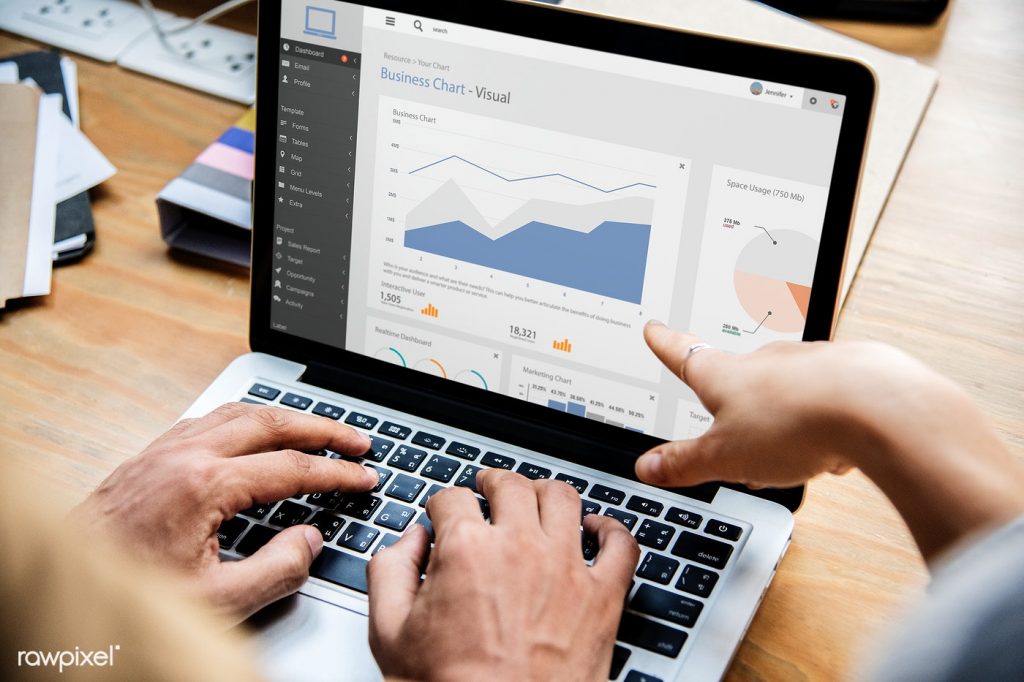10 Effective Ways to Identify Niche Markets & How to Attract Target Followers for LinkedIn
- SocialSpark Pro
- May 14, 2019
- 8:00 am
Share on Social Media!
Understanding your target market is critical on any platform. Having a clear idea of who your ideal audience is will help you create a focused marketing and content strategy. A focused strategy can increase your ROI, engagement, and conversion rates. Knowing who your ideal audience is will ultimately help you create more engaging and relevant ads and content on LinkedIn. We will explore the importance of effectively engaging your target audience, who is on LinkedIn, how to identify your niche, and how to appeal to your audience.

“Instead of using technology to automate processes, think about using technology to enhance human interaction.” – Tony Zambito
Consumer online brand-related activities, or COBRA, is one way to understand the importance of effectively engaging your target audience. COBRA theorizes why consumers engage with brands on social media. Basically, the theory states that consumers engage with a brand’s content on social media by consuming, creating, or contributing. Consumers consume your content when they read your posts, watch your videos, or view images that you post to your LinkedIn page. Your audience creates content when they take a picture using your product and tags you, mentions your brand in one of their posts, or writes a review. A user contributes by liking, commenting, or sharing your brand’s content (Muntinga, 2015). These online user behaviors are most important in connecting with your audience.
To encourage users to consume, create, or contribute to your brand’s content, it is important that you are creating content that motivates them to do so. Understanding who your target audience is, is the first step in creating engaging content on LinkedIn. Once you know who your audience is, you can learn what content they want to consume, create, and contribute to. When a user interacts with your brand in this way, it is typically an indicator that the user has positive sentiment towards your brand and is a great gauge of brand perception.

Word of Mouth is the Best Medium of All! – William Bernbach
Identifying your target audience also increases the chance of electronic word-of-mouth marketing on LinkedIn. Word-of-mouth, or WOM, is one of the most valuable things that your brand can generate on social media. Think of that last meme that went viral, and how it spread like wildfire. Pretty soon, you and everyone else, had heard about it. WOM is similar, yet it refers to how your customers organically spread information or recommendations about your brand. Think of it as free advertising, but it’s even more convincing because it is actually coming from real customers! According to Nielsen, “92% of consumers believe suggestions from friends and family more than they do advertising” (Mosley, 2017, para 11). So, WOM is free, it spreads fast, and it’s powerful! Now you can see why it is so valuable.
But how can you generate WOM through LinkedIn? It all starts with an actively engaged and interested audience. You want a following that is interested in what you do, who your brand is, and what you share with them on LinkedIn. Per Social Media Today, “If your audience is not interested in you, they’re not likely to help you grow” (Mosely, 2017, para 15). If your audience likes what you’re about, they’re going to share it.
What’s the first step in having an actively engaged audience? You guessed it! Knowing who this audience actually is. Once you know what audience you’re looking to attract, you can begin creating valuable and interesting content on LinkedIn that this audience will be eager to share!

Who’s Who on LinkedIn?
So, you probably already know that LinkedIn is a great place to interact with other business professionals. But what does the user base really look like on the platform? Here are some brilliant LinkedIn demographic stats!
- 106 Million active monthly users engaging with content on the platform.
- 44% of LinkedIn users are female – 56% are male.
- Almost 1/3 of users are age 18-29, over 1/3 are 30-49, and 1/4 are 50-64.
- 44% of LinkedIn users have an income over $75,000 – 75% have an income over $50,000.
- 50% of users have some college education.
- One third of users live in an urban area.
- 70% of users live outside of the U.S. (Fontein, 2017).

Narrowing Your Niche for LinkedIn
Now you know what the vast pool of LinkedIn users consists of. So, let’s talk about narrowing it down to YOUR ideal audience. Your target audience should never be “everyone.” Trying to target too large of an audience results in waisted resources, scattered content and messaging, and an unenthused audience that doesn’t engage. Narrowing in on your specific niche allows you to focus on it, rock it, and ignite enthusiasm among your followers! How to narrow in on your niche:
- Look at your current customers. On LinkedIn, you will want to see who is doing business with you. How old are they? Do they own a business? If so, how big is it? What are their needs? Do you see any trends in spending patterns? Can you identify any of their interests? Where are they coming from? What language do they speak? Try to identify some commonalities that exist within your current customer base.
- Fill in gaps with analytics. Use analytics offered on LinkedIn and Google to help gather a little more in-depth data. For example, you can see data about visitors other than your customers. You can also see more in-depth demographics and what is driving the most traffic and engagement. Maybe there is a certain topic that is driving the most traffic, and this could be an issue that your target audience struggles with or relates to.
- Scope out your competitors. Looking at how your competition interacts with, and reaches, their audience can also give you some valuable information. You can see how your competition positions themselves, which segments they are targeting, and who is using their product or service.
- Know what need you fill. Knowing what need your product or service fills will help you determine your audience. What differentiates you from others on the market? Why should your customers choose your product/service? What problem are you solving? Think about the benefits you bring to the table.
- Create your target market persona. If your target market was a person, who would they be? Determine their age, gender, education, ethnicity, location, income level, wants and needs, interests, and values. Focus on the factors that are most relevant for you (Newberry, 2018). There you have it, this new “persona” is your target audience!

“If your Target Audience isn’t listening, it’s not their fault, it’s yours.” – Seth Godin
Now that you know your audience, you can craft ads, messages, and content that appeal to them! Here are some ways to get started:
- Timing is everything. Be sure to post when most of your target audience will see it. The best times to post on LinkedIn are typically Tuesdays, Wednesdays, and Thursdays between 10 a.m. and 11 a.m.
- Focus on you. This may sound counterintuitive, but talk about your business. What makes you unique? What sets you apart from the competition? Why should your customers choose you? What connects customers to your business? Talk about your values, what you bring to the table, and what problems you solve. Humanize your brand. Just remember the 80/20 rule! It should not always be a sales pitch.
- Appeal to their emotions. Build a genuine relationship with your audience. Commiserate with them, support them, laugh with them. Show your audience you truly understand their problems and can help. Social media is all about two-way communication, so encourage it!
- Provide content they will find value in. Remember that persona you created? What do they find interesting? What are they struggling with? What makes them laugh? What will help you build a connection with them? Create content that achieves this. For example, maybe your audience is college students. You could create an infographic with some job-hunting tips. This shows you understand your audience, their problems, wants, and needs, and helps them connect with your business.
- Engage your audience. Ask questions, respond to comments and reviews, and encourage feedback. This helps you learn more about your audience, and shows you value their opinion and patronage. Learn more about the value of user-generated content in our previous blog post, “How to Effectively Handle User Generated Content on LinkedIn.”
You know the saying, “you can’t please everyone.” Same is true for your LinkedIn target audience. Trying to appeal to everyone is ineffective. Instead, find your niche and develop your target persona. Finding these can help increase your engagement, improve your ROI, and even spread organic word-of-mouth marketing.
About the Author

Robin West
Hey! I’m Robin. I am currently finishing up my Bachelor of Science degree in marketing at Southern New Hampshire University. I love traveling, trying new food, and cooking. I can make a mean lasagna! I adore dogs and try to spend as much of my free time with them as possible. I hope to join a talented digital marketing team after my graduation and to one day be my own boss! My ultimate goal is to positively impact the marketing industry by helping exceptional companies build genuine and lasting relationships with their customers.
Sources:
-
Fontein, D. (2017). Top LinkedIn demographics that matter to social media marketers. Retrieved from https://blog.hootsuite.com/linkedin-demographics-for-business/
-
Mosely, M. (2017). Why word of mouth marketing is so important. Retrieved from https://www.socialmediatoday.com/marketing/why-word-mouth-marketing-so-important
-
Muntinga, D. (2015). Introducing COBRAs: Exploring motivations for brand-related social media use. Retrieved from https://www.tandfonline.com/doi/citedby/10.2501/IJA-30-1-013-046?scroll=top&needAccess=true
-
Newberry, C. (2018). How to define your target market: A guide to audience research. Retrieved from https://blog.hootsuite.com/target-market/
Want More Tips? Read more here:
The Best Practices for Targeting Twitter Audience
Marketing Mistakes to Avoid & How to Bounce Back from Big Blunders on Instagram!
LinkedIn: The History of Professional Networking
LinkedIn: Who Uses It & Why Does It Matter?
5 Easy Tips To Improve Your Twitter Marketing Strategy!
Privacy Policy | Terms & Conditions | Disclaimer | FAQs
© 2019 All Rights Reserved. SocialSpark Pro, LLC